Where Gumbo Was #187
The Brooklyn Museum, only blocks from home for me, has always seemed a paradox: a truly world-class museum that gets little attention because it's in an 'outer borough' of a city full of world-class museums.

But it certainly got the attention of three Gumbo Guessers, who (in order) quickly recognized its backyard Statue of Liberty: GarryRF, George G and PortMoresby. The museum's Statue of Liberty, by the way, spent its first 80 years shilling for the Liberty Warehouse in Manhattan.
Constantly changing exhibitions, many organized by the museum itself, others visiting, help keep it in the public eye and draw out-of-town visitors, and the museum's status as a stop on hop-on/hop-off bus routes in the past few years helps, too. The exhibit above opened this week, and is already, as you might expect, very popular, and not only with children.
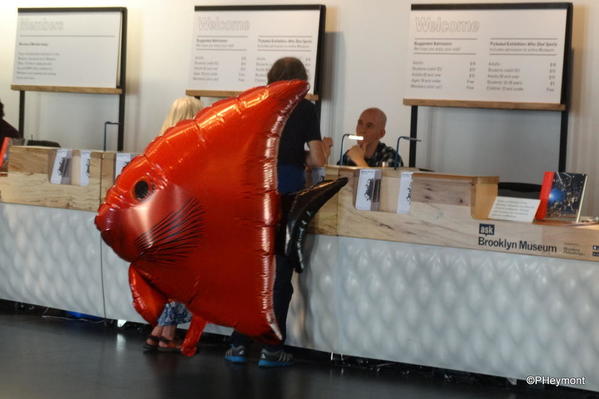
It's the work of Philippe Parreno, a French-Algerian artist; it's meant to get audiences to think about the "passage of time and shifting patterns of light and atmospheric condtions." The fish frequently escape from the aquarium-like entranceway of the museum; above one passes the admission desk. Their planned range, encouraged by air vents, is in the lowest glass level below.
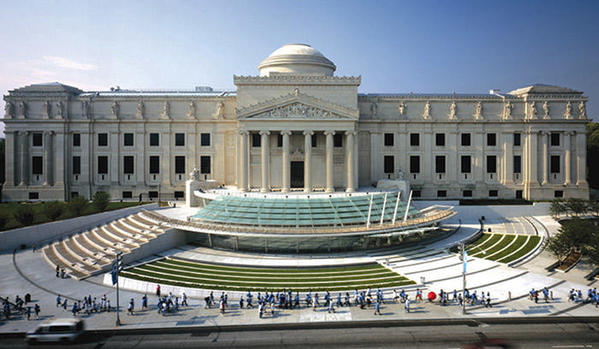
The entrance plaza is relatively new, built in 2004. While it's a stark contrast to the neo-classical style of the building, it's a really pleasant entrance, as well as a great place for sitting, sunning, reading, and watching children play (unauthorizedly) in the water feature off to the side. When built at the beginning of the last century, there was a big staircase up to the original entrance, still seen as a large set of doors, above.
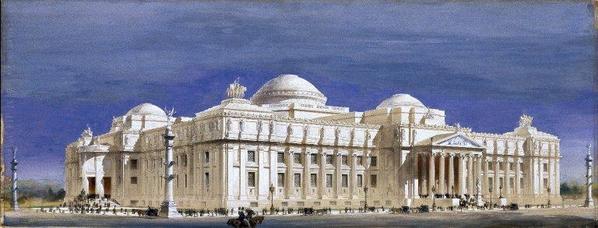
Here's how the museum was originally supposed to look, as designed by McKim, Mead and White. It would have been the largest museum in the world, but in the end, for budget and other reasons, only a fifth of it was built. In the 1920s, the steps were removed, and the lower floor became a very plain entrance. Some further additions at the back of the building were done in the 1970s.
Just a bit more on the exterior. Along the upper part of the building are a series of figurative sculptures, and more above the pediment, all designed by Daniel Chester French, whose best-known work is Lincoln at the Lincoln Memorial. In the 1960s, rebuilding of the Manhattan Bridge orphaned French's allegorical statues of Manhattan and Brooklyn that had stood at the entrance. They now flank the museum's entrance; Brooklyn is above.
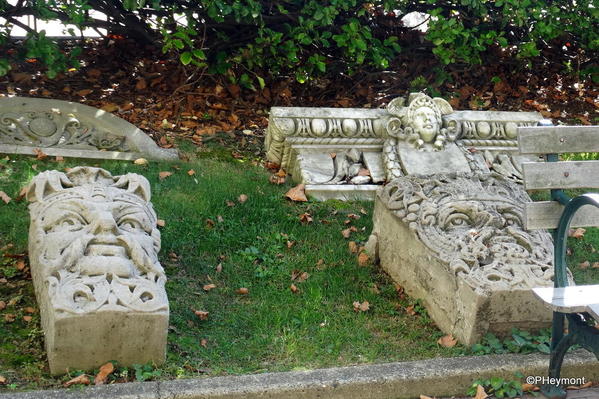
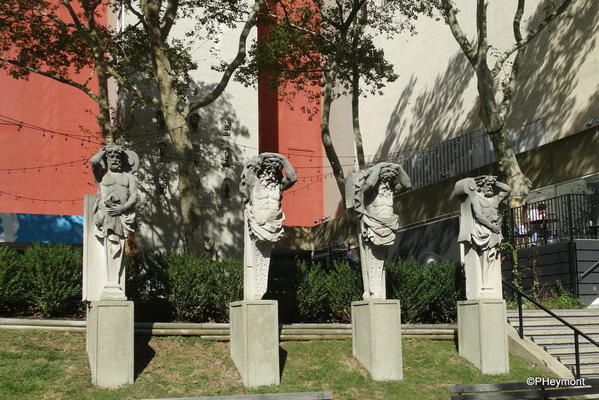
As you can see, the museum has also given a home to other victim's of the city's constant change and redevelopment; all these and more are from buildings that once were proud of them; now they have a home in the garden behind the museum.
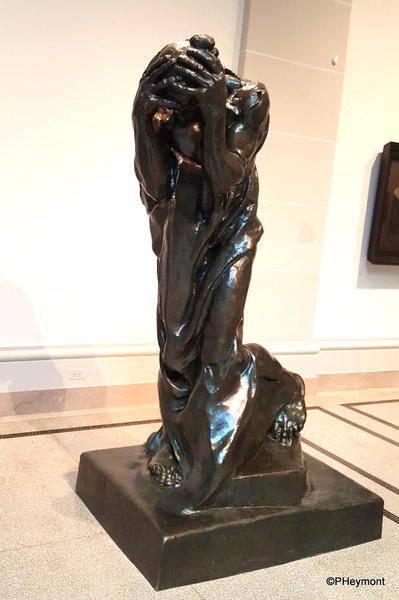 Not all the museum's sculpture is leftovers, of course; there are significant works by American sculptors including Hiram Powers, Frederick Macmonnies, French and others.
Not all the museum's sculpture is leftovers, of course; there are significant works by American sculptors including Hiram Powers, Frederick Macmonnies, French and others.
And, spread around a gallery on the third floor, is the Cantor family's gift of many works by Rodin. Most are models for larger installations, such as the Burghers of Calais. At left, Andreu d'Andries from that group.
Part of the museum's outreach programs, this desk is new...and amazingly well-informed (as well as having computers). A question we asked the other night about a detail in a painting led to a real discussion, and a new view of the painting for us. There's also an app to download and use throughout the museum. Perhaps it's in use in the picture below!
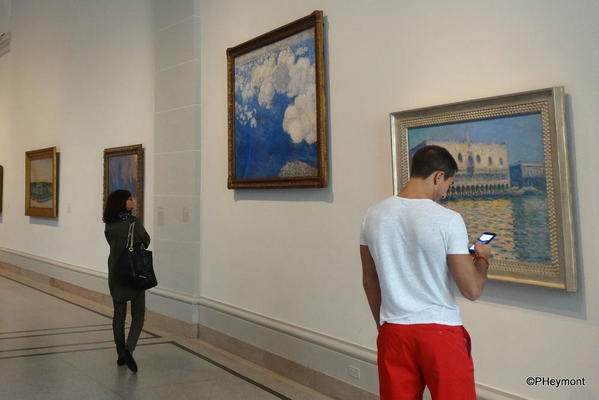
Paintings as well as sculpture, of course. Here, on the 3rd floor, next to the Beaux Arts Court that was the original intended entry into the museum, parts of the European painting and sculpture collections. The 3rd floor also has the Egyptian Galleries, one of the largest and finest, and oldest, anywhere.
The court is also used for events, including receptions, balls, and the museum's once-a-month First Saturday house party, which opens the museum free to all until 10 pm, and adds special exhibits, music and dancing and usually a film or two. The floor is illuminated from below. Below, the court seen from the 4th floor.
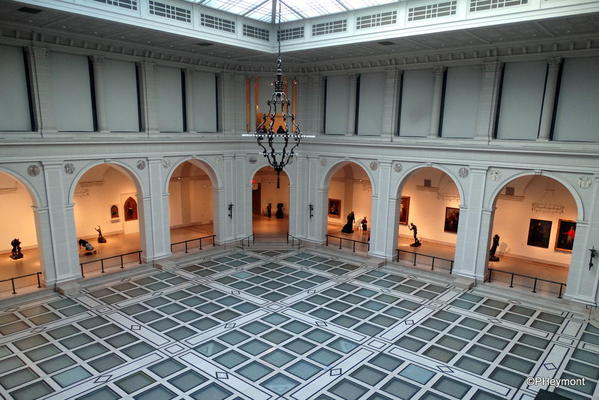
The 4th floor is home to more space for temporary exhibits, as well as some key permanent ones, including Judy Chicago's key feminist work, The Dinner Party. It's the heart of the Sackler Center for Feminist Art.
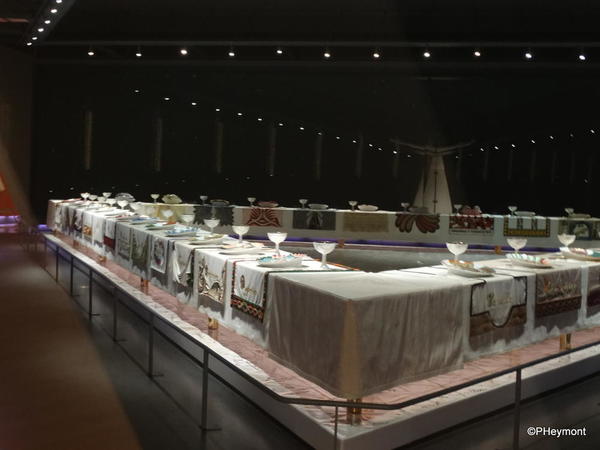
Also on the 4th floor are two pieces (literally) of Brooklyn's past, two Dutch houses of the 17th century, disassembled and reassembled in the museum. They've been a favorite of Brooklyn students for years; the museum has a large school outreach program, as well as children's art programs.
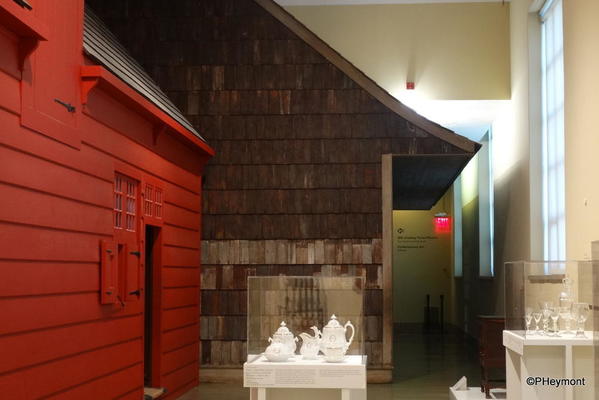
Near the whole houses, there are rooms, collected from homes in different regions of the country, some showing ordinary life in the south and other regions, and some showing just what it means to say "The rich are different." These two rooms are from a banker's residence in Saratoga Springs, NY and the New York City home of Collis P. Huntington's mistress and later second wife. When she moved out, the Rockefellers moved in.
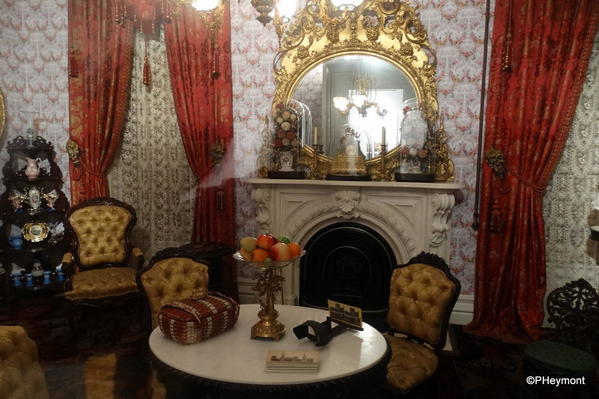
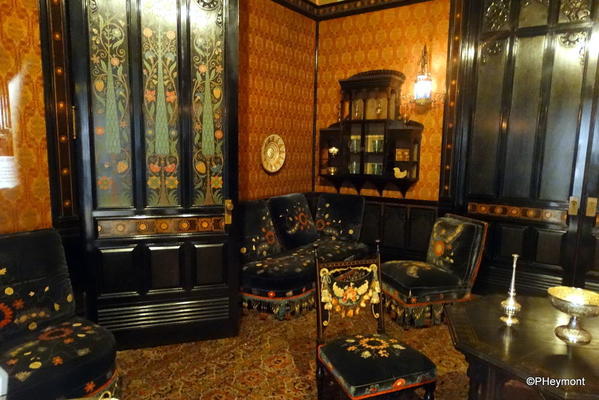
The 5th floor (you'll have noticed we're wandering upward) houses both special exhibit galleries, and my favorite permanent exhibit, the Luce Center for American Art, which mixes paintings, sculpture, furniture, housewares and other objects to tell the story of change from the beginnings of the nation to today.
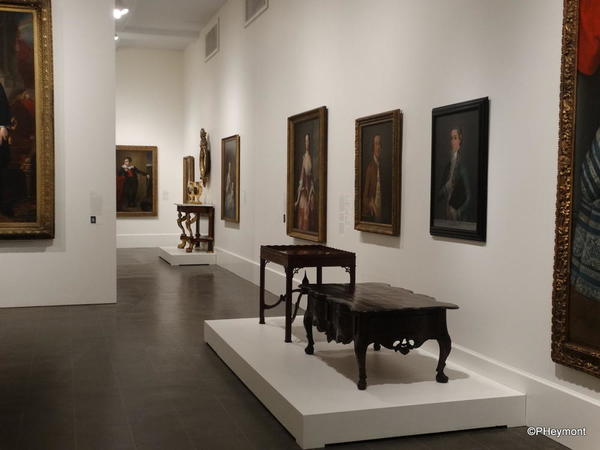
Oh, did I say permanent? NOT. The Brooklyn Museum is constantly in flux, and the changes in the past year in the Luce Center have been significant. The entrance room, which once displayed early movies and other Americana of recent days now starts with "The Earliest Americans" and America in the beginning is expanded to include all the Americas. And the narration is sharp: this was not a time of peaceful development.
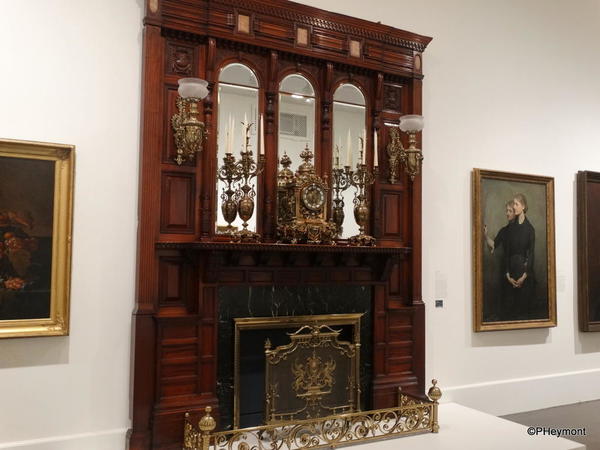
The changes in narration, once we move to the "Colonies to States" section and on, include American Indians, both in artwork and in discussion of the fraught relationships. None of the changes are just 'add-ons;' they all seek to explain and question. Women, and especially women artists, have gained a new prominence. One of my favorite museum things is to find an artist totally new to me; this time it was Laura Wheeler Waring (1877-1948) who flourished during the Harlem Renaissance. Here's her Women with Bouquet.

Also on the 5th floor is one of the most unusual exhibits...if that's what it is...I've ever seen in a museum, the Visible Storage and Study Center, open to all. It's a rabbit warren of cabinets, drawers of objects, moving panels of pictures, furniture and more that wouldn't otherwise be seen. Too much to put on display, too good to keep in a vault.
Here's a piece I saw a few years ago in the Visible Storage that's made its way out: a streamlined radio by 1930s designer Walter Dorwin Teague. In the background, Georgia O'Keeffe's view of the Brooklyn Bridge.
Two more paintings from the Luce Center before we move on: One is Francis Guy's painting of Brooklyn in the winter of 1819-20, when it was one of the small villages and towns of Kings County. The other is one of my favorite landscapes; it's by Albert Bierstadt, who is associated with both the Hudson River School and the Rocky Mountain School. This is one of his western canvases, showing the effects of light after a storm.
There's also a sizable collection of glass, and especially stained glass, with large-scale works by Louis Comfort Tiffany and his studio, the Lamb Brothers, and more. Too many for here; I'll stick to this view of hospitality by John Lafarge, and a piece by Dale Chihuly, much more static than many of his works.
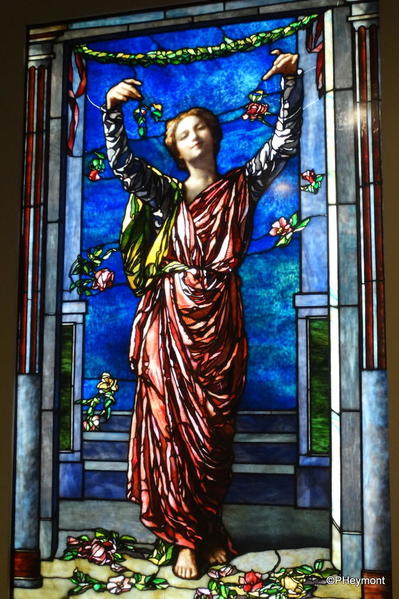
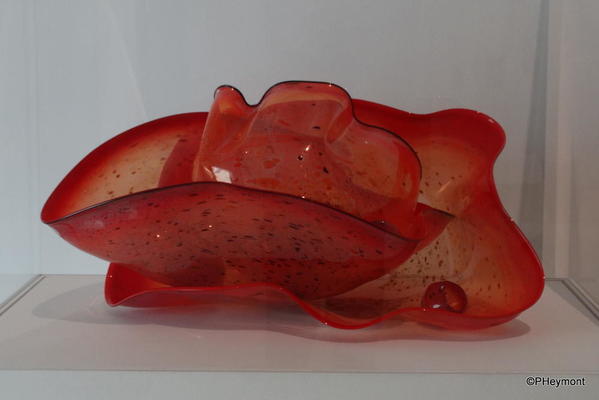
Ahead for the museum? More change. First-floor exhibit space has been cleared, a space (and a new stairway) are in the works for a new Asian gallery on the second floor, and more is to come.
IF YOU VISIT:
The museum is open 10-6 Wednesday through Sunday, and to 9 on Thursday. The Brooklyn Botanic Garden is next door and shares a parking lot with the Museum. Both have excellent gift shops; the Museum's is strong in books and jewelry.
There's a cafe in the Museum with sandwiches and some hot food; a pricy restaurant is also available. The Garden has an outdoor cafe that's great if the weather is good, and an indoor one as well, in its conservatory.
The Museum is on Eastern Parkway near Grand Army Plaza; the parking lot entrance is on Washington Avenue. Subway stop is Brooklyn Museum on the 2 and 3 trains.
Museum website: https://www.brooklynmuseum.org

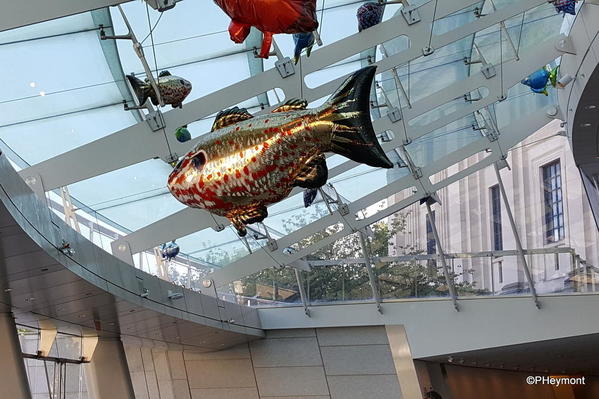
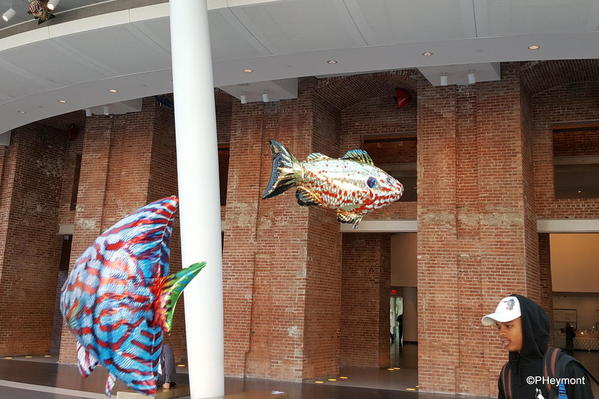

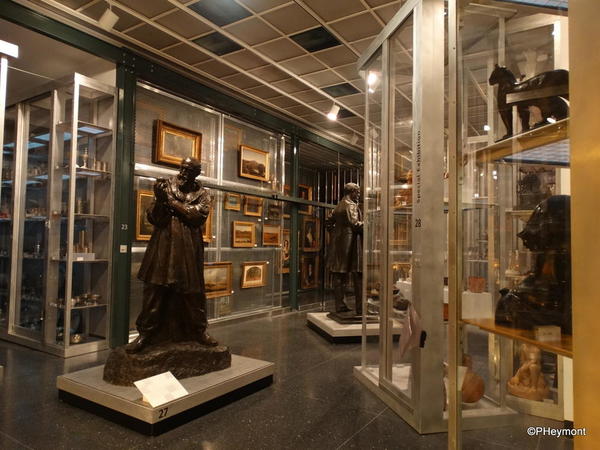
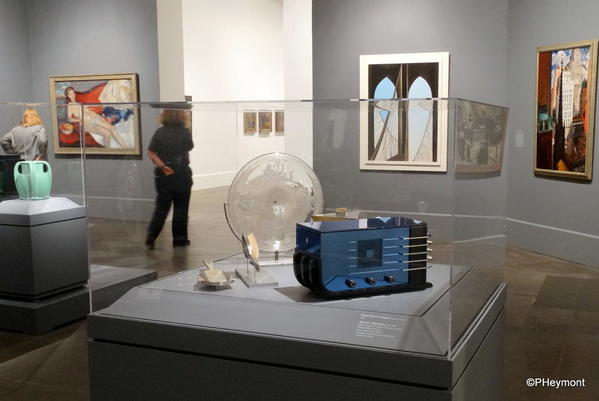
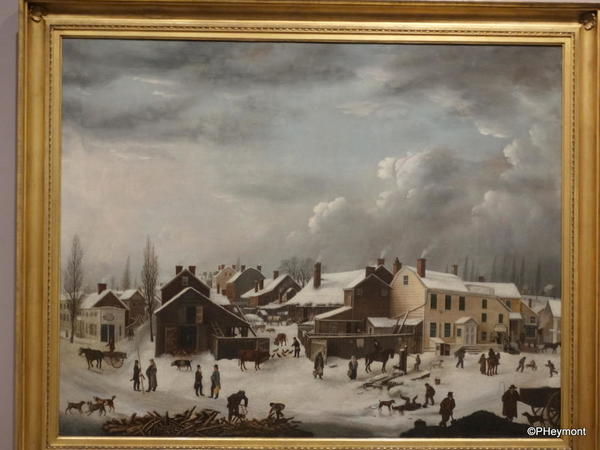
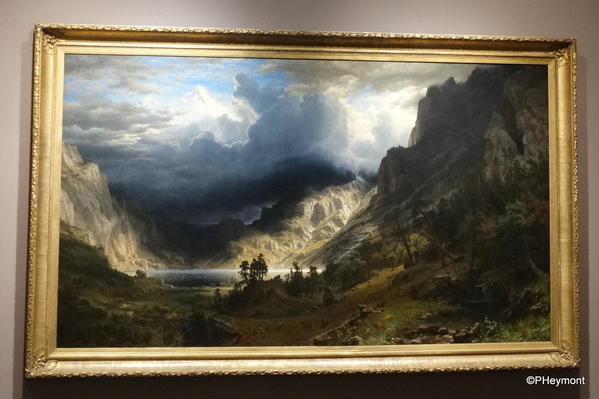
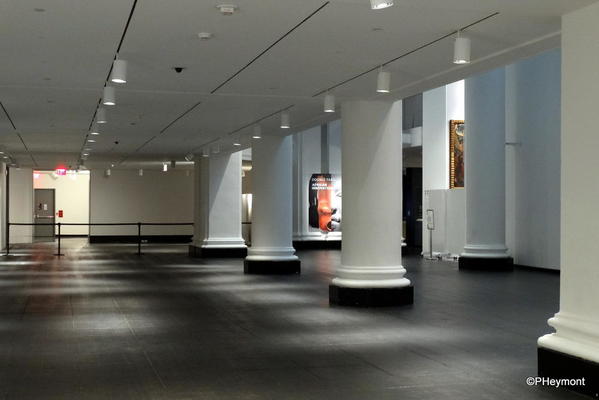
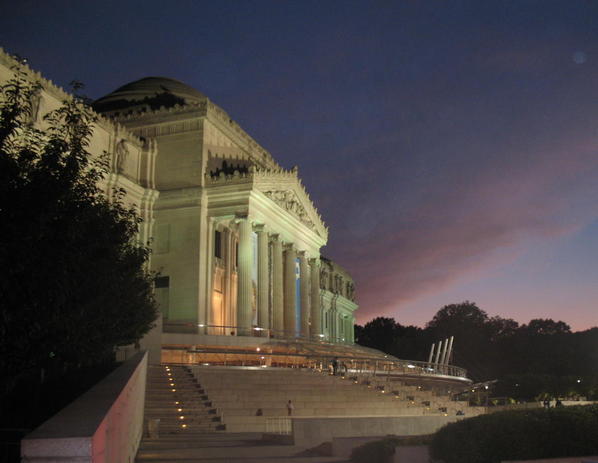




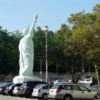



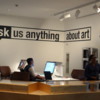



















Comments (3)